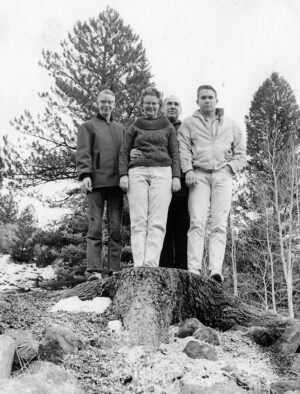by Hal Walter
You see, it’s a little like this,” said my friend Peter. “It’s sort of like a roach motel. It’s easy to get in, but it’s hard to get out.”
Peter was talking about Custer County, specifically real-estate ownership here, where a quick look at the 81252 ZIP code on realtor.com brings up a mind-numbing 227 homes for sale. That’s one home on the market for every 15 residents, and most of us already have homes.
Check it out — there’s everything from a one-bathroom shed on a lot in Silver Cliff for $53,000 to a trophy home on 200 acres for $3.2 million. Or perhaps you prefer the mid-range 2,000-square-foot, three-bedroom, two-bath Santa Fe style home right in town with a view of both the Sangres and the backside of Family Dollar for just $395,000.
Prices may vary widely but these homes all have one thing in common. They’re not exactly selling like beer at a ball game.
A number of things have conspired to crater the real-estate market in Custer County. First, there’s the national economy. Let’s face it, very few people buying high-end real estate in Custer County made or make their money here.
Second, there’s the local economy, which in recent years has been driven by real-estate sales and construction. There’s not much going on there, and much of the real-estate is out of middle-class price range anyway. Recently, six low-income housing units sprung up in Silver Cliff.
Thirdly, and this is the tricky part, many of the homes on the market were overbuilt. In other words, people put more money into them than they are likely to get back out of them. Some of these more expensive homes have rather custom features, and land is still cheap enough that most high-end buyers are still more likely to build their own dream rather than make do with someone else’s.
A great example is a house near mine. It’s easy to figure there’s more there than the asking price of $379,000, with a 3,000-square-foot house, separate barn with living quarters, big detached metal workshop, horse facilities and 35 acres. It’s been on the market about two years.
Custer County is an odd place, to be sure. Of its estimated 3,500 residents, fewer than 500 live right in the town area of Silver Cliff and Westcliffe. When you drive into the Clusterplex from the east, you are greeted by a junk yard, a trailer park, a collection of older houses in various states of repair, and enough steel buildings to make one wonder if they are part of the architectural plan for the community. It hardly gives the appearance of a resort, though with the Sangre de Cristo mountains towering over the town, and the scenic and lush Wet Mountain Valley below, it’s easy to see how some people might overlook all of this.
For businesses we have a supermarket, a hardware store, three banks, a feed store, a newspaper and a bakery. There are gas stations, a tire shop, auto repair shops, small manufacturing plants, convenience stores, a Family Dollar, and several mom-and-pop stores selling everything from hiking gear and clothing to health food and furniture. We have several art galleries and a handful of restaurants. Some businesses offer things like accounting and financial services, hair styling and shipping. And there are two busy liquor stores.
It’s difficult to see how any of this would attract a high-end real-estate buyer. Still, realtors in about a dozen separate offices remain hopeful there are a few more people out there looking to buy the Westcliffe dream.
If you visit in summertime you would think this is a happening place, with music festivals, outdoor theater and other attractions almost every weekend. The valley is green and the weather is beautiful. Then comes winter and there just isn’t much going on.
In the years B.C. (before child) Taos, N.M., was one of our favorite getaway destinations. We met interesting people there, and the restaurant choices were exciting. Recently I made a trip to Taos to pick up materials for some tile repair at the ranch I manage. It was apparent on the first pass through town that something was different. For one thing, there was not the usual traffic. But some of the buildings seemed run down and there was not the normal foot traffic. For some reason the hodgepodge of housing and buildings really stuck out more than I remembered, and I noted a number of real-estate signs.
We stopped on the way out at a favorite eatery, a restaurant that has been featured on the Food Channel, and lunch was quite mediocre. Then we went to our favorite coffee shop and the coffee was not that great either. We wondered if somehow we were just in another place in our lives now, or had something happened in Taos?
Back home, a little internet research revealed that the Taos area is suffering from a major economic slump. Gross receipts were down eight percent in late 2009 compared to the previous year. Building and developing were down 24.6 percent, and art sales down 52 percent. I could not find data on skier visits, but with lodging and food down almost five percent I can’t imagine they are breaking any records up on the mountain.
Besides the disappointing food, something else was nagging at me all the way home. What was it that Taos reminded me of?
A couple days later it occurred to me that Taos in some ways had reminded me of Westcliffe. … And in other ways of Leadville, and Salida, and a lot of other funky little towns in the Central Colorado area that have built entire economies on the notion that it’s so cool to live here.
In the investment world there’s something called a “market correction.” Those of us who own property in these desirable roach motel real-estate markets might just be in for a reality check some time in the near future.
Hal Walter writes and edits from the Wet Mountains. You can keep up with him regularly at his blog: www.hardscrabbletimes.com


